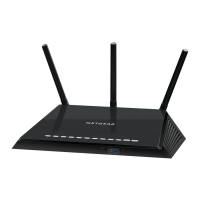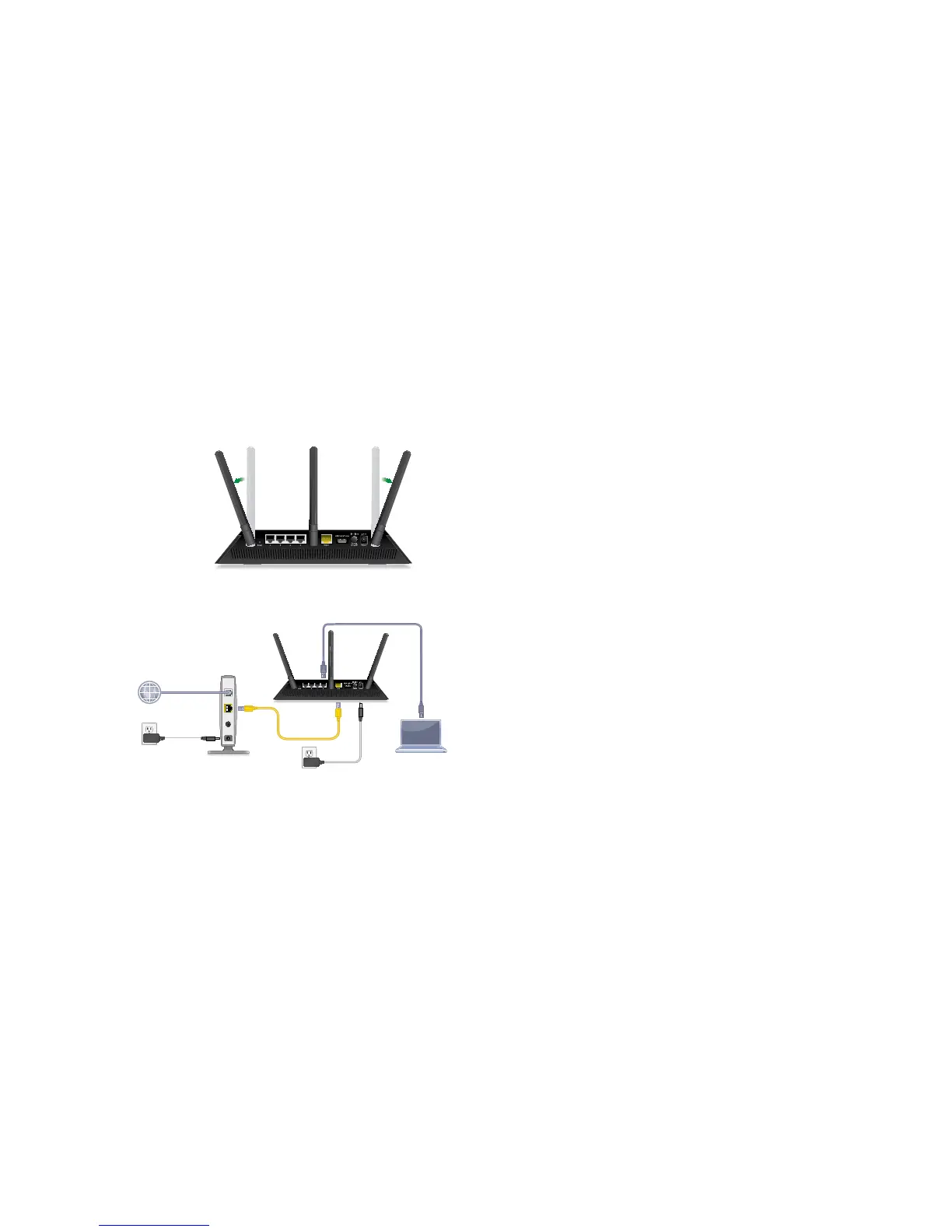1. Position the antennas.
Position the antennas for the best WiFi
performance.
NETGEAR recommends that the center
antenna be vertical and that you aim the
others outward at 45‑degree angles as
shown.
Note: The antennas are not detachable.
Attempting to detach the antennas will
damage the router.
2. Prepare your modem.
Unplug your modem’s power. If it has a
battery backup, remove the battery.
3. Connect your modem.
Plug in your modem. Put the battery back
in. Then connect the modem to the yellow
WAN (Internet) port on the router.
4. Power on the router.
The Power LED lights
amber and then turns
white when the router is
ready.
5. Connect a device.
You can use an Ethernet cable or connect
with WiFi.
You can also use WiFi to connect your WiFi
device to the router. To connect with WiFi,
use the WiFi network name and password
on the product label.
6. Log in to the router.
Launch a web browser.
NETGEAR genie displays.
If you do not see genie, enter
www.routerlogin.net in the address field
of the web browser. When prompted, enter
admin for the user name and password for
the password.
Follow the genie steps to connect to the
Internet.
8. Get the user manual.
You can get the user manual online at
http://downloadcenter.netgear.com or
through a link in the product’s user interface.
Router
Ethernet cable
Cable or DSL
Internet
Modem
Power
adapter
You can use this diagram to connect your router or follow the detailed instructions in this booklet.
7. Get free apps.
During the installation process, genie
prompts you to download two free apps:
• genie app. A personal dashboard that
lets you monitor, control, and repair
your home network.
• ReadySHARE Vault app. Enables
automatic continuous backup of a
Windows computer to a USB device
that’s connected to your router.
Ethernet cable
Computer

